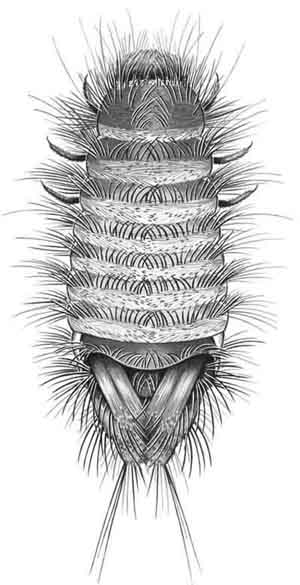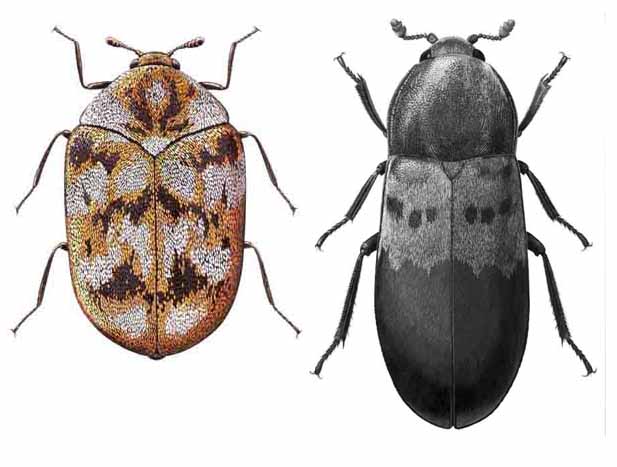I found what looks like a tiny “caterpillar” in my home. What is it?
Published
Categories
Blog Post
Let’s take a look at a common critter that share our space. Amazingly, over 500 species of arthropods have been recorded in houses! One of our most common household guests is the carpet beetle. The larvae look like tiny, furry, ‘caterpillars’.

Larva of a carpet beetle, family Dermestidae, also known as skin or hide beetles. Drawing: copyright ROM.
Most people who discover these critters don’t even realize they are looking at an insect unless they see it move. They are very small. I find a few of the larvae during the winter months throughout my house. They won’t hurt you although they may munch on some clothes or furniture especially if it is of animal origin. They don’t bite or carry diseases although they may cause a bit of damage to leathers, feathers, skins or wool. The adults usually emerge in spring.
They are not something that you need to worry about unless you see a lot of them (in which case, it might be a good idea to find the dead mouse or other dead animal hidden in the wall). You don’t need to call an exterminator if you find carpet beetles; the population can easily be reduced by cleaning the house a bit more thoroughly and removing food sources.
Biology
The larvae are scavengers and feed on anything that is of organic origin preferring animal matter (some species prefer plants). So they will eat hair, wool, dead skin, leather, carcasses, feathers, and insects. The adults feed on nectar and pollen.
Because of the larvae’s taste for animal matter, the ROM uses some dermestid species in our bug room to help clean soft-tissue from skeletons. However, dermestid beetles are considered museum pests since they feed on natural history specimens (e.g. furs, skins, and insects) and can damage our collections.
Here are a couple adult species that you may see inside your home.

Drawings: copyright ROM.



